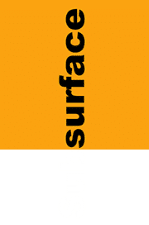Do you need a permanent or temporary soil nail wall? Here are the similarities and differences.
Both Remain in Place
Both permanent and temporary soil nail walls remain in place. Temporary soil nails are backfilled against and abandoned in place. Permanent soil nail walls remain in place to serve as site retaining walls or to keep earth pressures off basements.
Design Differences
Permanent soil nail walls are designed with higher factors of safety and often with more conservative soil properties than temporary soil nail walls. Permanent walls are designed using little or no cohesion as future water content changes in the soil behind the wall would affect the apparent cohesion of the soil.
Corrosion Protection
Permanent soil nail walls require corrosion protection of the soil nails. Three common options are epoxy coated soil nails, galvanized soil nails (especially with hollow bar soil nails) and multiple corrosion protection. Williams Form offers some nice details on corrosion protection options for soil nails and ground anchors at this link, corrosion protection.
Shotcrete
The shotcrete face of a permanent soil nail wall is designed per ACI to ensure that the rebar and WWF have sufficient concrete coverage to limit corrosion. ACI restrictions on placing shotcrete must be strictly followed for permanent work. Permanent soil nail walls should receive curing compound. With regard to construction joints, joints are not used in temporary soil nail walls are are not effective in permanent soil nail walls. For more on that, see the ADSC position paper on construction joints for soil nail walls.
Appearance
Temporary soil nail walls are “as-shot” meaning that the surface of the shotcrete will have a very rough texture and will follow the profile of the excavated ground. The bearing plate connection of the soil nail is most often exposed. Permanent soil nail walls are often screeded. For screeded walls, the surface of the shotcrete has a coarse texture and a screed rod is used to cut the shotcrete to alignment wires installed in each lift. The bearing plate connection of the soil nail is typically not exposed. Permanent walls are sometimes covered with a veener, such as brick, segmental block, cast concrete, or my favorite, architecturally sculpted shotcrete that closely imitates masonry or native rock.
